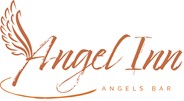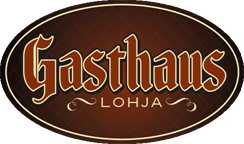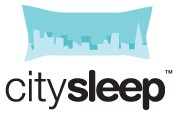The hospitality industry has experienced dramatic disruption over the last decade particularly in the area of hotel channel distribution and the unprecedented number of options that guests have for booking a hotel room.
In the old days competition was limited to keeping an eye on what your competitor across the street was doing.
Today it is still the traditional competitors but now we also have the very large tech companies vying for customer attention, the online travel agencies (OTAs), global distribution systems (GDS’s), and metasearch websites (i.e. tripadvisor.com).
The hotel distribution landscape continues to change at a rapid pace, and in order to keep up and succeed, operators need also to shift their focus on to guests and their experiences, according to a recent report from McKinsey.
McKinsey consider three factors that contribute to distribution dynamics: the proliferation of online travel agencies (OTAs) and loyalty programmes, increased usage of mobile devices by consumers and the rise of disruptors such as Airbnb.
The consulting firm’s suggestion to succeed in this fast-changing environment are:
- Harness advanced analytics to understand the customer better.
- Adjust mobile offerings to capture, secure, and serve the customer.
- Safeguard against future disruption.
As a hotel operator, in order to optimise the mix of channels, now is the ideal time to take an in-depth look at the costs and benefits of each distribution channel from direct to indirect and online to offline to get ready for a new year of disruptions in 2020.
By analysing these channels, operators can develop an approach to their distribution strategy that increases revenue and maintains good profit margins.
Consider all the costs of doing business
Historically, operators have not always factored distribution costs into their channel strategy. As a result, hotels focused on driving revenue in the short term may price rooms too low through OTAs to “turn the tap on”, only to find that after commission costs are taken into account they are not earning as much as they thought.
And when evaluating channel costs, there are expenses associated with direct bookings as well. These may cover for example: your website, search engine marketing, content production, loyalty programmes and the value of promotional discounts and offers made.
Start with a booking channel audit
Booking channels such as your website and the indirect OTAs should be regularly monitored for cost effectiveness.
If a particular channel is performing better than the others, work out what could be the difference and adjust accordingly your other channels.
It is important to assess the cost and share of business that your various distribution channels contribute. The objective is to optimise the distribution channel that costs you the least amount and generates the highest revenue by delivering guests with higher ancillary spend and the best customer retention rates.
Each online distribution channel should play a different role in your hotel marketing programme with a mix of channels, rather than relying solely on one. For example giving the majority of your room inventory to one channel i.e. an OTA may help in the short term but it can prove costly going forward.
You need as an operator to ramp up the impact of your direct channels, for example your website – which will reduce your cost of sales and give you the opportunity to build a stronger relationship directly with your guests.
The volume of online business today driven into hotels via OTAs has shown to be both significant in its size and value to hotel operators.
As an independent hotel operator there is no way to match the OTAs reach through distribution or brand awareness. So most hotels are forced to accept the high commission costs that come with these OTA relationships as a necessary evil.
According to Morgan Stanley in the past few years, the OTAs' share of bookings has increased for the larger corporate chains to 6% in 2015 and was recently approaching 8%, taking anywhere from 10% to more than 20% commission - the highest of any booking channel. So recently the larger brands have stepped up their efforts to book more guests directly.
Any reduction in the OTA sales commissions will go directly to your bottom line as profit.
Show me the numbers
Many operators have got into the good habits of collecting data, but end up not using it or don’t know how to extract the value from it.
An effective data or business intelligence plan can help a property to analyse existing data, identify trends and support future strategic decision making based on facts rather than instinct.
Operators should use their data to assess which channel is the most profitable, using conversion and revenue performance metrics for insights. And combine that information with customer behaviour data to understand more about a customers buying decisions, booking behaviour and search patterns.
A review of your hotel’s annual occupancy forecast will provide insights into soft periods that need help, it should be no surprise for example that particular dates every year need help i.e. December 25th.
As an operator, if you cannot keep pace with the rate of change in the market, you end up either over pricing and losing reservations or under-performing during peak occupancy and “leaving money on the table”.
Revenue management strategies
To be effective, revenue and yield management strategies need to consider seasonality and time.
Although seasons can be put into blocks, operators need to assess each day in turn. Making assumptions about conditions on a particular day is not an effective way to manage your rates or distribution strategy.
The idea though isn’t to simply just increase rates or drive up occupancy, but to have the ability to analyse and identify what a property’s different segments are so that the demand can be managed.
Operators must be able to find the right mix of channels so that you can attract the right customer at the right time for the right price.
A distribution strategy should outline how to increase or decrease a property’s exposure across particular distribution channels in a manner that can improve the overall revenue and profitability. This is an approach that uses the channels as a tactical toolbox, dipping in and selecting the right tool for the right job and not over relying on one single channel.
Customers may be comfortable making their booking in a certain way, for example through an OTA website, which means that it is not always that easy to shift their channel preference to adopt another method such as direct booking through your website.
There is no doubt that pricing has always been used by operators to drive both occupancy and RevPAR. But, in today’s hospitality market with so much price transparency and buyer research, there is an even greater focus on having the right rate in place, the option to book direct and a plan on how to keep guests satisfied.
An integrated online hotel booking engine enables guests to book directly through your hotel website, a financial benefit from spending less on commissions, plus providing you with an opportunity to engage and build relationships directly with your customers.
Happybooking is first and foremost a property management system. That means they help you with the boring admin and automate tedious tasks giving you more time to monitor your online reviews and interact with customers. On average customers can get back up to 10 hours per week – think what you could do with that extra time!
Happybooking have always focused on creating a user-friendly booking system to help property owners improve their revenue performance, and generate more profit by reducing costs with direct bookings rather than going through a third party. Take a quick tour to see how it works -click here.
Our guest blogger is John Kennedy.
John is a hospitality consultant, dedicated to helping increase profits through marketing, revenue management and efficient operations and can be found at https://kennedy.marketing/
Image source: Pixabay on Pexels



